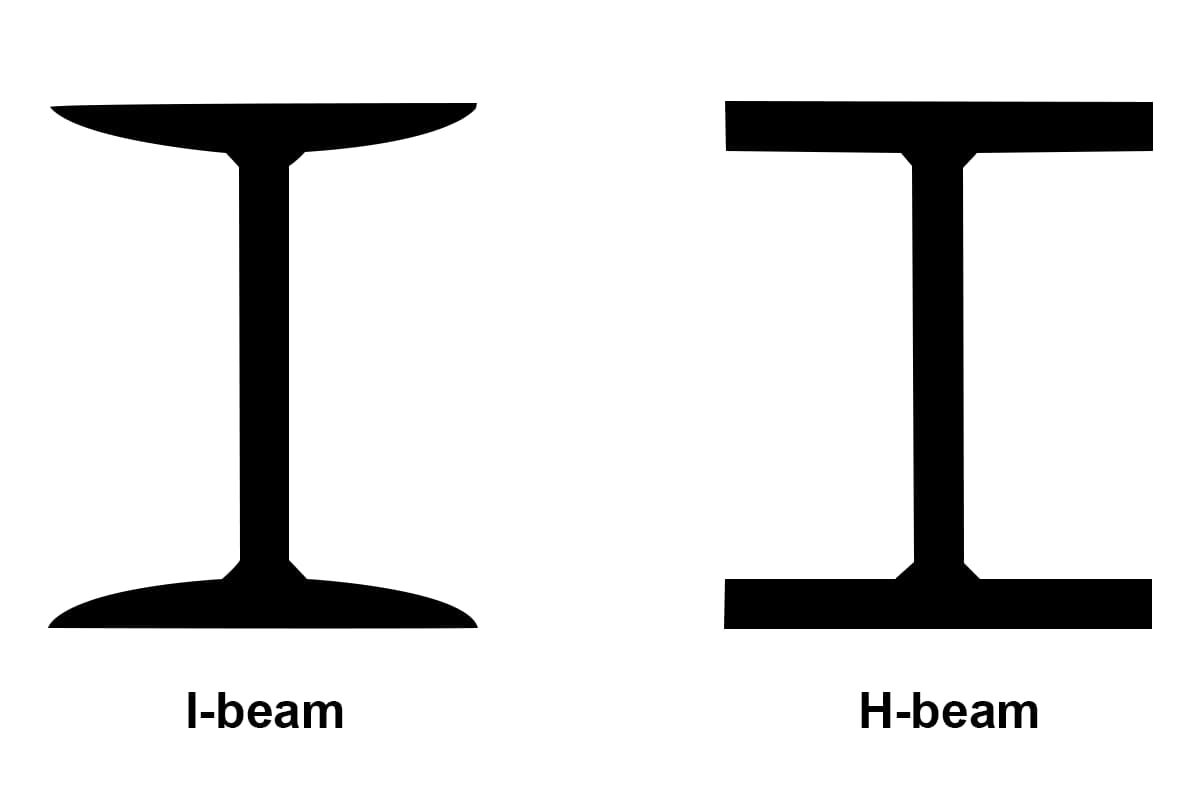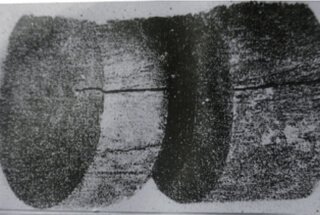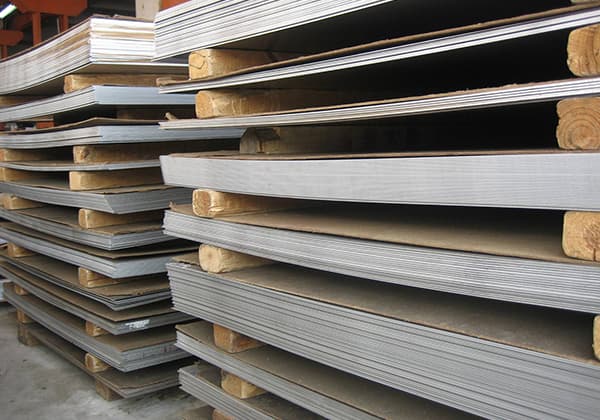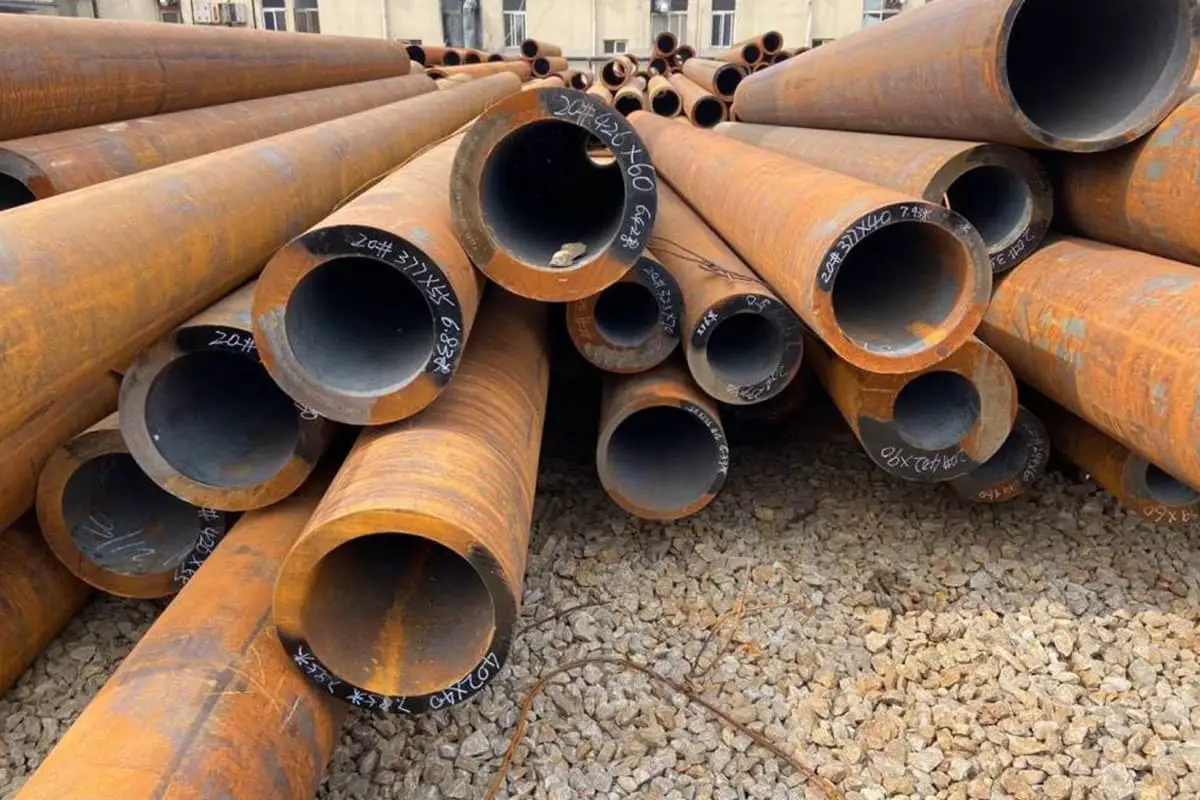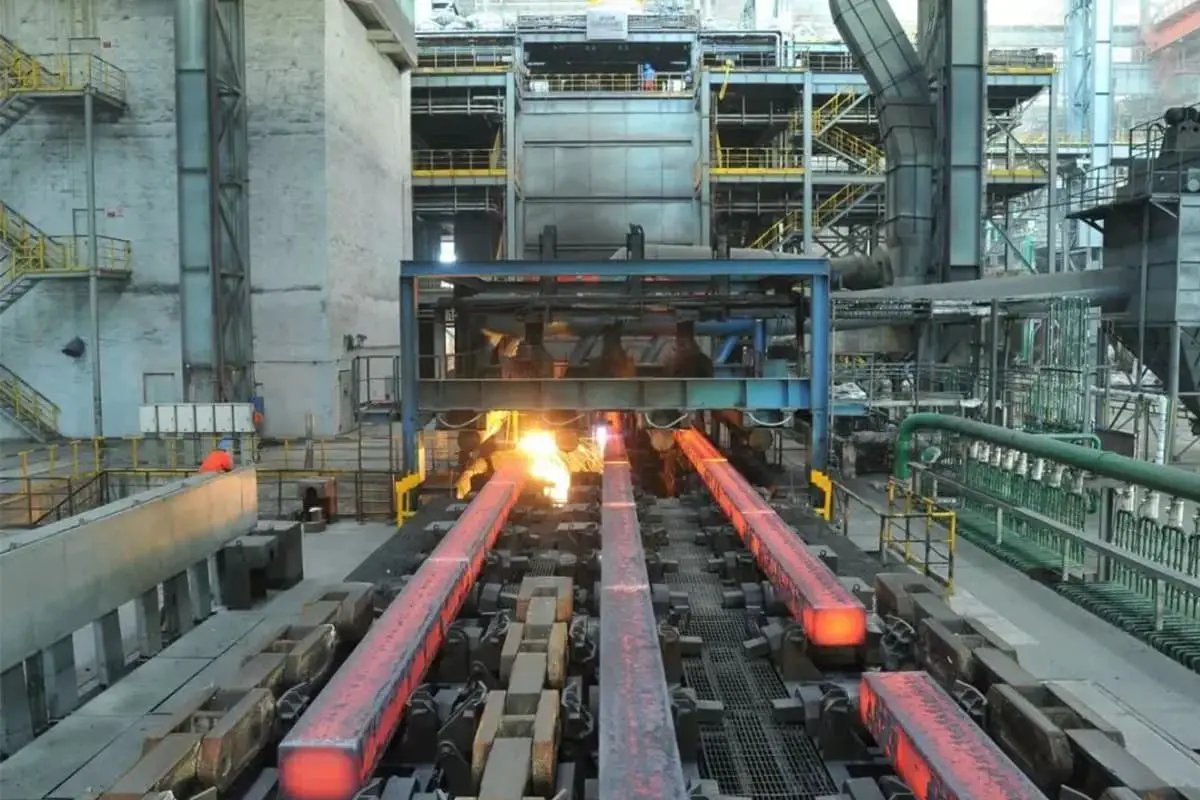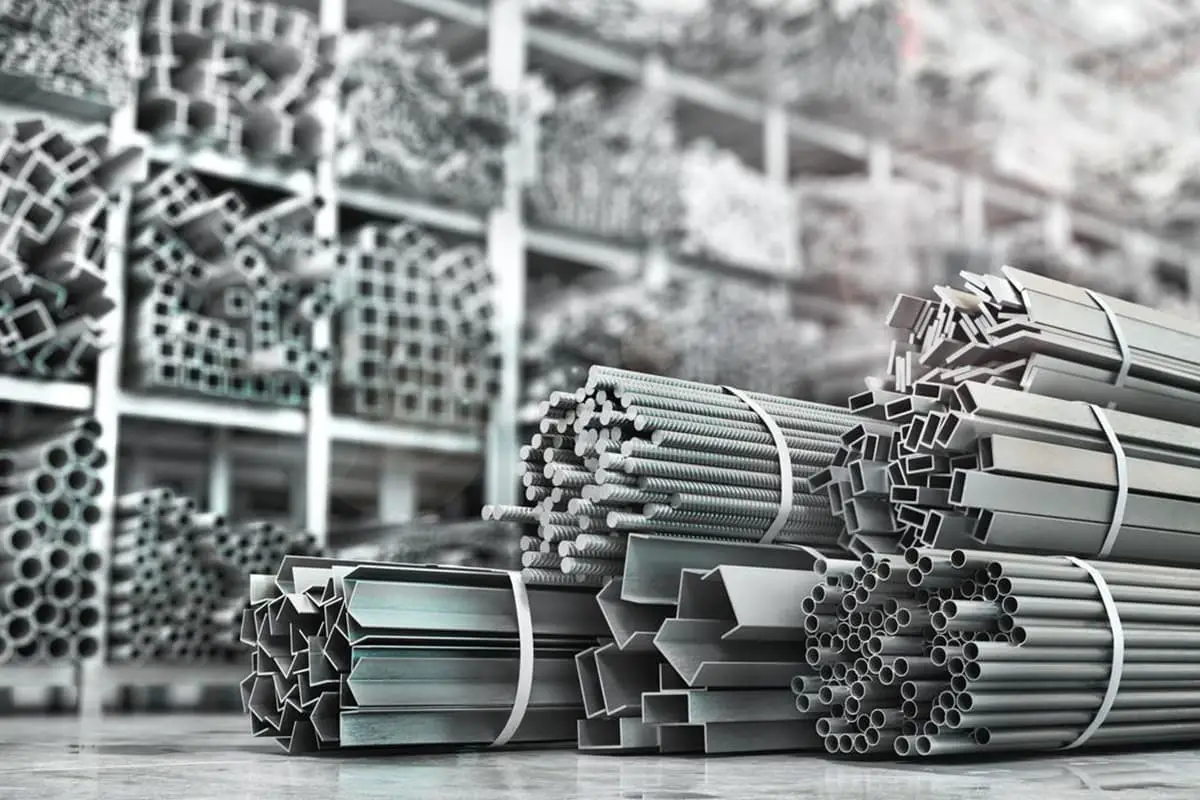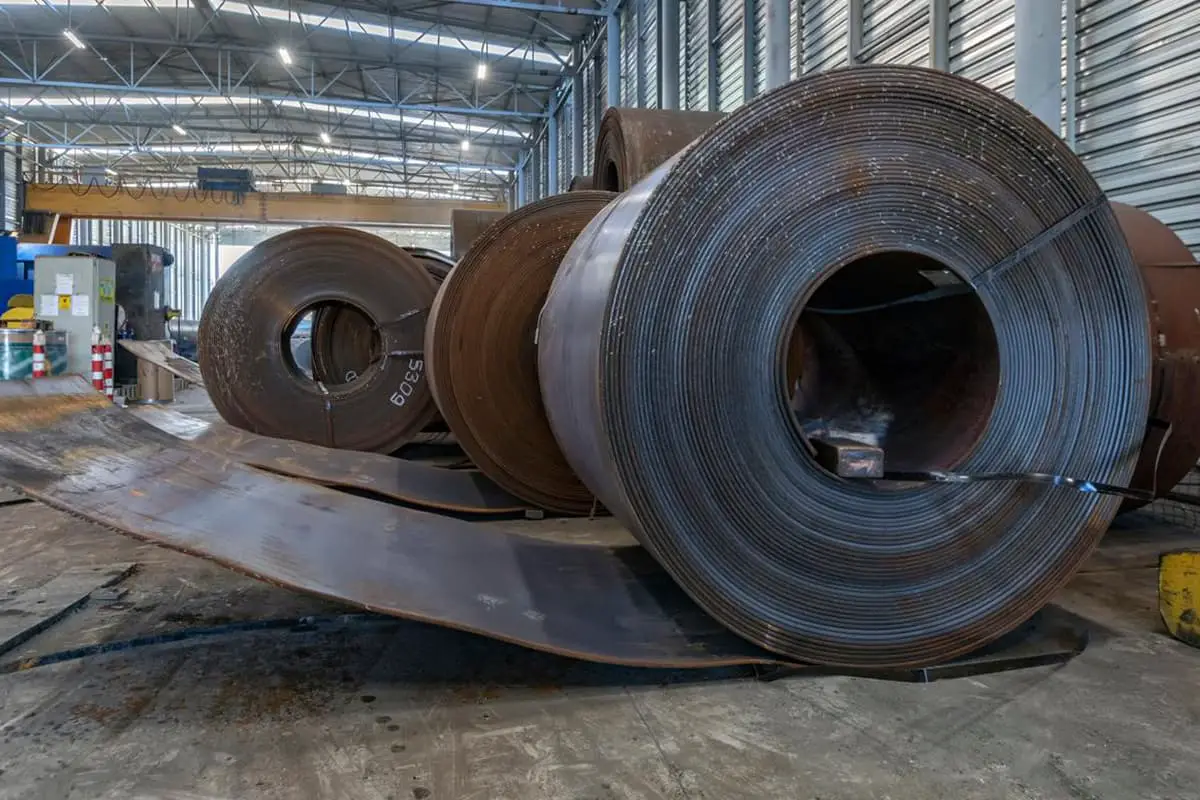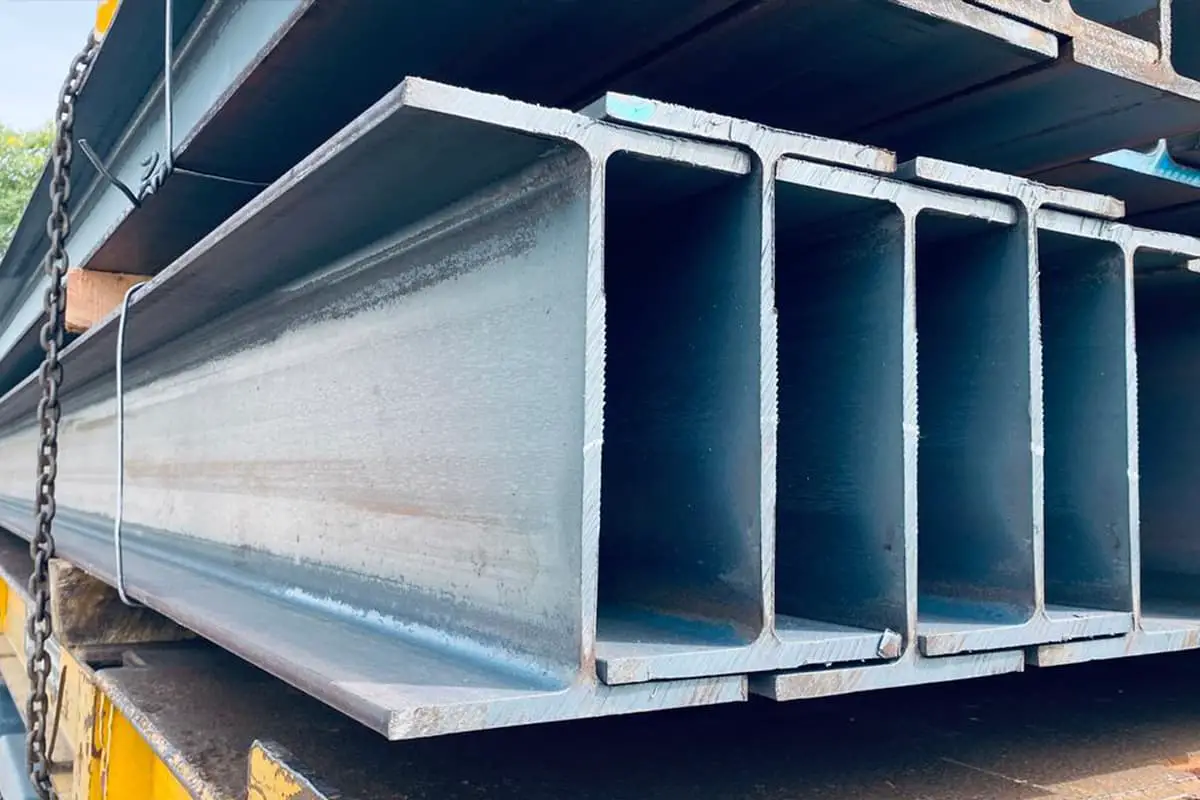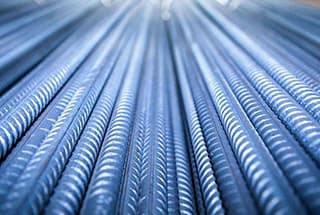
Ever wondered how steel, a cornerstone of modern civilization, is made? This comprehensive guide dives into the intricate steel production process, from raw materials to finished products. Discover how elements like carbon, manganese, and silicon shape steel’s properties, and learn about the crucial steps involved, including smelting, rolling, and refining. By the end of this article, you’ll have a clear understanding of the methods and materials that transform iron ore into the versatile steel products we rely on every day.
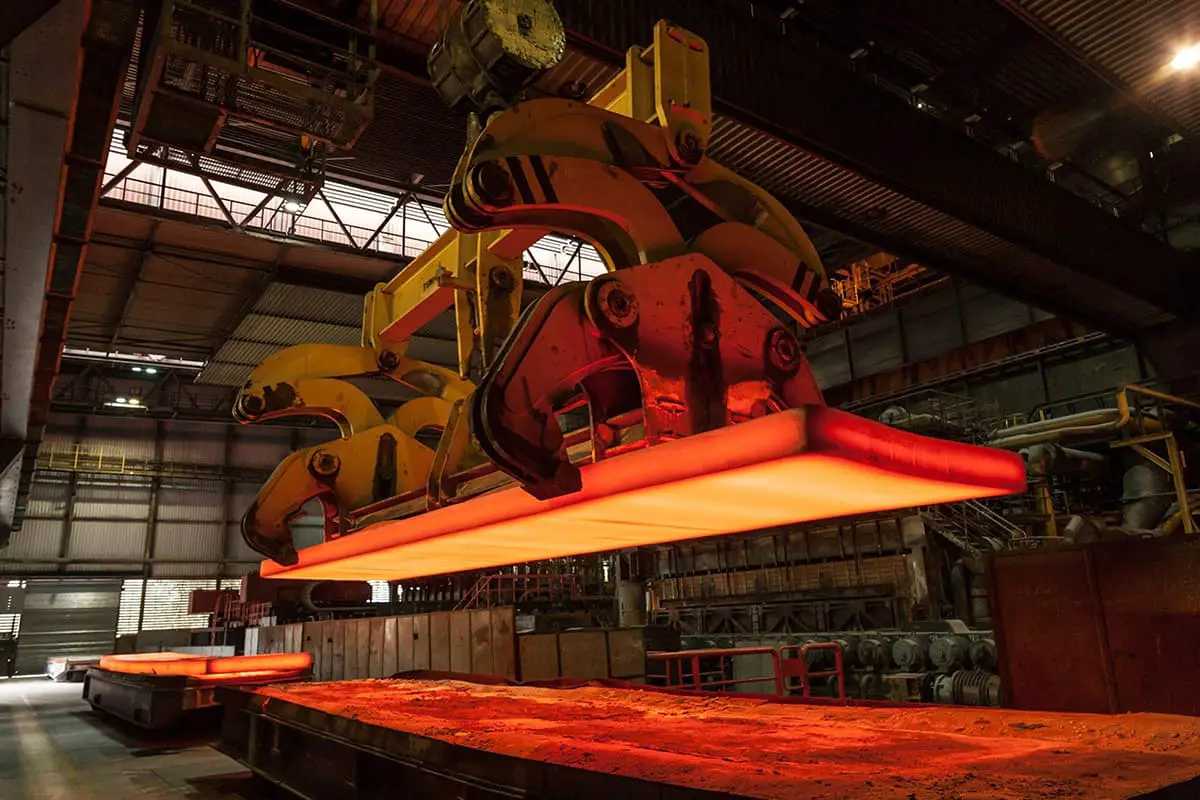
Iron-carbon alloys containing less than 2% carbon are referred to as steel. The five elements in carbon steel refer to the main constituents of its chemical composition, i.e., C (Carbon), Si (Silicon), Mn (Manganese), S (Sulfur), and P (Phosphorus).
Additionally, during the steelmaking process, gases such as O (Oxygen), H (Hydrogen), and N (Nitrogen) inevitably mix in.
Furthermore, in the Aluminum-Silicon deoxidation process, Al (Aluminum) is inevitably present in the molten steel, and when Als (acid-soluble aluminum) is at or above 0.020%, it plays a role in refining the grain size.
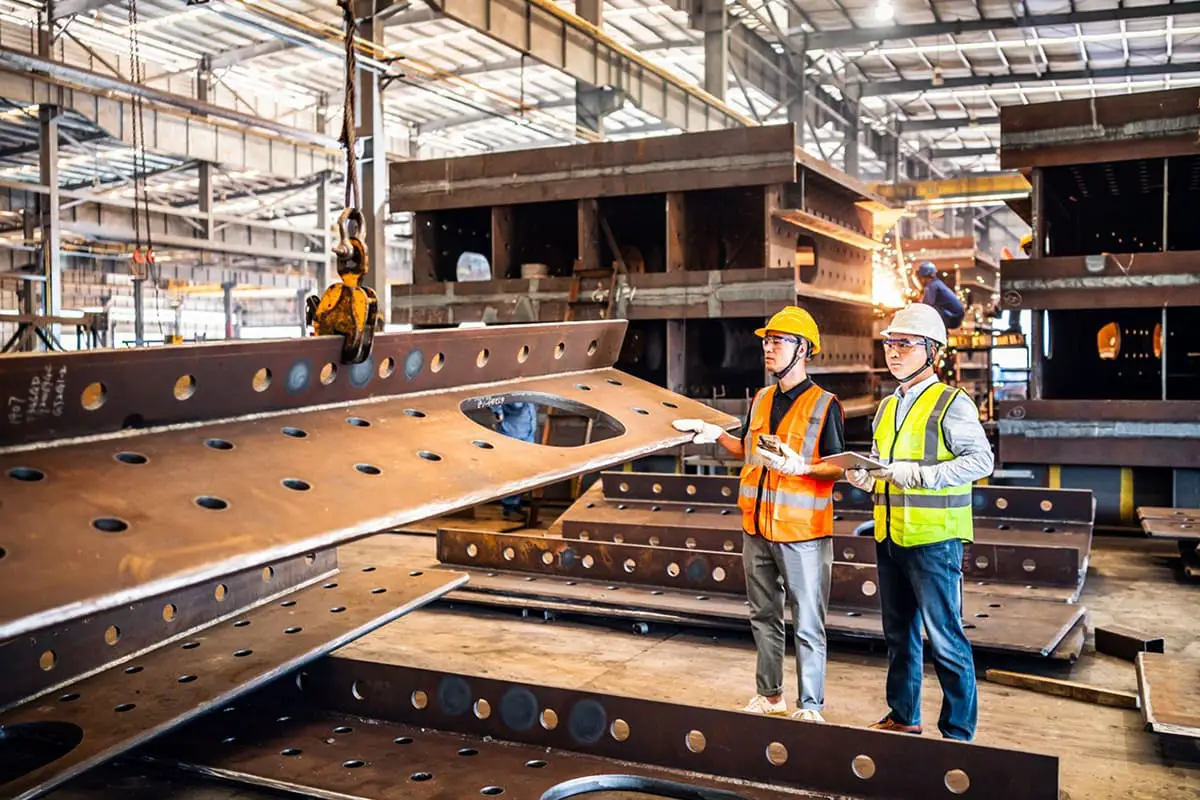
1. Carbon (C):
As the carbon content in steel increases, the yield point and tensile strength rise, but plasticity and impact resistance decrease. When the carbon content exceeds 0.23%, the weldability of the steel deteriorates.
Therefore, for low-alloy structural steel used for welding, the carbon content generally does not exceed 0.20%. Higher carbon content also reduces the steel’s resistance to atmospheric corrosion; high-carbon steel in open-air storage is prone to rust. In addition, carbon can increase the steel’s cold brittleness and aging sensitivity.
2. Silicon (Si):
Silicon is added in the steelmaking process as a reductant and deoxidizer, so calm steel contains 0.15-0.30% silicon. If the silicon content in the steel exceeds 0.50-0.60%, silicon is considered an alloy element. Silicon can significantly enhance the elastic limit, yield point, and tensile strength of the steel, making it widely used for spring steel.
By adding 1.0-1.2% silicon to quenched and tempered structural steel, its strength can be increased by 15-20%. Silicon, in combination with elements like molybdenum, tungsten, and chromium, enhances corrosion resistance and oxidation resistance, useful for manufacturing heat-resistant steel.
Low-carbon steel containing 1-4% silicon has extremely high magnetic permeability and is used in the electrical industry for silicon steel sheets. An increase in silicon content reduces the weldability of the steel.
3. Manganese (Mn):
In the steelmaking process, manganese acts as an excellent deoxidizer and desulfurizer, with general steel containing 0.30-0.50% manganese. When more than 0.70% is added to carbon steel, it is referred to as “manganese steel”.
This steel type not only has sufficient toughness compared to general steel but also has higher strength and hardness, improving the steel’s hardenability and thermal processing properties.
For example, 16Mn steel’s yield point is 40% higher than that of A3 steel. Steel containing 11-14% manganese exhibits extremely high wear resistance, making it suitable for excavator buckets, ball mill liners, etc. An increase in manganese content weakens the steel’s corrosion resistance and decreases its weldability.
4. Phosphorus (P):
Generally, phosphorus is detrimental to steel. It increases the steel’s cold brittleness, deteriorates its weldability, reduces plasticity, and worsens its cold bending performance. Hence, the phosphorus content in steel is usually required to be less than 0.045%, with high-quality steel demanding even lower levels.
5. Sulfur (S):
Sulfur is typically harmful to steel. It induces hot brittleness, reducing the steel’s ductility and toughness, leading to cracks during forging and rolling. Sulfur is also detrimental to welding performance and reduces corrosion resistance.
Therefore, sulfur content is generally required to be less than 0.055%, with high-quality steel demanding less than 0.040%. Adding 0.08-0.20% sulfur to steel can improve machinability; such steel is often referred to as free-cutting steel.
6. Chromium (Cr):
In structural and tool steels, chromium significantly increases strength, hardness, and wear resistance, but simultaneously reduces plasticity and toughness. Chromium enhances steel’s oxidation resistance and corrosion resistance, making it an integral element in stainless and heat-resistant steels.
7. Nickel (Ni):
Nickel boosts steel’s strength whilst maintaining good plasticity and toughness. Nickel has high corrosion resistance to acids and alkalis and exhibits rust and heat resistance at high temperatures.
However, due to nickel being a scarce resource, it should be substituted with other alloy elements when possible, especially in nickel-chrome steel.
8. Molybdenum (Mo):
Molybdenum refines steel’s grain structure, enhances hardenability and thermal strength, and maintains sufficient strength and creep resistance at high temperatures (Creep refers to deformation under long-term stress at high temperatures).
Adding molybdenum to structural steel improves mechanical properties and suppresses brittleness caused by heat in alloy steel. In tool steels, it enhances hot hardness.
9. Titanium (Ti):
Titanium is a strong deoxidizer in steel. It densifies the internal structure of steel, refines grain size, lowers aging sensitivity and cold brittleness, and improves weldability. Adding appropriate titanium to 18Cr-9Ni austenitic stainless steel can prevent intergranular corrosion.
10. Vanadium (V):
Vanadium is an excellent deoxidizer for steel. Adding 0.5% vanadium to steel refines the grain structure, enhancing strength and toughness. Carbides formed from vanadium and carbon can improve hydrogen corrosion resistance under high temperature and pressure.
11. Tungsten (W):
Tungsten has a high melting point, high density, and is an expensive alloy element. Tungsten carbide has high hardness and wear resistance. Adding tungsten to tool steel significantly enhances hot hardness and thermal strength, making it suitable for cutting tools and forging dies.
12. Niobium (Nb):
Niobium refines grain size and reduces steel’s overheating sensitivity and temper brittleness, increasing strength but reducing plasticity and toughness. Adding niobium to ordinary low-alloy steel enhances resistance against atmospheric corrosion and hydrogen, nitrogen, and ammonia corrosion at high temperatures. Niobium improves weldability. When added to austenitic stainless steel, it can prevent intergranular corrosion.
13. Cobalt (Co):
Cobalt is a rare precious metal, often used in specialty steel and alloys, such as heat-resistant steel and magnetic materials.
14. Copper (Cu):
Steel refined from Daye ore by Wuhan Iron and Steel often contains copper. Copper enhances strength and toughness, particularly atmospheric corrosion resistance. The downside is that it tends to cause hot shortness during hot processing, and if copper content exceeds 0.5%, plasticity decreases significantly. When copper content is less than 0.50%, it doesn’t affect weldability.
15. Aluminum (Al):
Aluminum is a common deoxidizer in steel. The addition of a small amount of aluminum to steel can refine the grain, improve impact toughness, such as in 08Al steel used for deep-drawing thin sheets.
Aluminum also has oxidation resistance and corrosion resistance. When used together with chromium and silicon, it can significantly improve the scaling resistance and high-temperature corrosion resistance of steel. The downside of aluminum is that it affects the hot workability, weldability, and machinability of steel.
16. Boron (B):
The addition of trace amounts of boron can improve the density and hot rolling properties of steel, enhancing its strength.
17. Nitrogen (N):
Nitrogen can increase the strength, low-temperature toughness, and weldability of steel, and increase its age sensitivity.
18. Rare Earth (Xt):
Rare earth elements refer to the 15 lanthanide elements with atomic numbers 57-71 in the periodic table. These elements are all metals, but their oxides are like “earth,” hence they are commonly called rare earth.
Adding rare earth to steel can change the composition, form, distribution, and properties of the inclusions in steel, thus improving various properties, such as toughness, weldability, and cold workability. The addition of rare earth in plow steel can improve its wear resistance.

The main task of steelmaking is to adjust the carbon content and alloy elements in steel to within the specified range according to the quality requirements of the steel type being produced, and to reduce the content of impurities such as P, S, H, O, N to below the permissible limits.
The steelmaking process is essentially an oxidation process. The excess carbon in the furnace charge is oxidized and burned into CO gas and escapes, while other elements like Si, P, Mn are oxidized and enter the slag. Part of S enters the slag, and part is discharged as SO2.
When the composition and temperature of the molten steel meet the process requirements, the steel can be tapped. To remove excess oxygen in the steel and adjust the chemical composition, deoxidizers and ferroalloys or alloy elements can be added.
The hot metal transported from the torpedo car, after desulfurization and slag blocking treatments, can be poured into the converter as the main charge, along with less than 10% scrap steel. Then, oxygen is blown into the converter to burn, the excess carbon in the hot metal is oxidized and releases a large amount of heat. When the probe detects the predetermined low carbon content, oxygen blowing is stopped and the steel is tapped.
Deoxygenation and composition adjustment operations usually occur in the ladle; then carburized rice husks are thrown on the surface of the molten steel to prevent it from being oxidized, ready to be sent to the continuous casting or mold casting area.
For high-demand steel types, bottom-blown argon, RH vacuum treatment, and powder spraying treatment (spraying Si-Ca powder and modified lime) can effectively reduce gases and inclusions in the steel, and further reduce carbon and sulfur. After these secondary refining measures, the composition can be finely adjusted to meet the requirements of high-quality steel materials.
The mold-cast steel ingots are heated in a reheating furnace using the hot charging and hot delivery new process, then rolled into slab, billet, small square billet, and other preliminary rolled products through a roughing mill and a continuous rolling mill.
After cutting the head and tail, surface cleaning (flame cleaning, grinding), high-quality products also require peeling and flaw detection for preliminary rolled billets. After passing the inspection, they are stored in the warehouse.
Currently, the products of the preliminary rolling mill are preliminary rolled slab, rolled square billet, oxygen cylinder steel billet, gear round pipe billet, railway vehicle axle billet, and plastic mold steel.
The preliminary rolled slab mainly supplies the hot rolling mill as raw material; the rolled square billet, apart from some being supplied externally, is mainly sent to the high-speed wire rod mill as raw material. Due to the advancement of continuous casting slabs, the demand for preliminary rolled slabs has been greatly reduced, and therefore has shifted to the above other products.
Using continuous casting slabs or roughing slabs as raw materials, they are heated in a step-by-step heating furnace and enter the rough rolling mill after high-pressure water descaling.
The rough-rolled materials are cut at the head and tail, and then enter the finishing mill, where computer-controlled rolling is implemented. After final rolling, they go through laminar cooling (computer-controlled cooling rate) and coiling by a coiler, forming a hot coil.
The head and tail of the hot coil often appear tongue-shaped and fishtail-shaped, with poor thickness and width accuracy, and defects such as waviness, folded edges, and tower shapes are common on the edges.
The coil is relatively heavy, with an inner diameter of 760mm (which is generally favored in the pipe manufacturing industry). The hot coil, after cutting at the head, tail, and edges, and undergoing multiple rounds of straightening and flattening in the finishing line, is further cut into plates or re-coiled, forming products such as hot rolled steel plates, flattened hot rolled coils, and longitudinal strips.
If the hot rolled finished coil is acid-washed to remove the scale and then oiled, it becomes a hot-rolled pickled coil. This product, with its trend of locally replacing cold-rolled plates and its moderate price, is widely favored by users.
Hot rolled steel coils are used as raw material, which are first acid washed to remove the oxide skin, and then cold rolled. The product is a hard rolled coil. The continuous cold deformation causes work hardening, which increases the strength and hardness of the hard rolled coil and reduces its toughness and plasticity.
As a result, its stamping performance deteriorates and it can only be used for parts with simple deformation. Hard rolled coils can be used as raw material for hot-dipped galvanizing plants since these plants are equipped with annealing lines. The weight of hard rolled coils generally ranges from 6 to 13.5 tons, with an inner diameter of 610mm.
Standard cold continuous rolling plates and coils should undergo continuous annealing (in a CAPL unit) or bell-type furnace annealing to eliminate work hardening and rolling stress, reaching the mechanical performance indicators set by respective standards.
Cold rolled steel plates have superior surface quality, appearance, and dimensional accuracy compared to hot rolled plates, with product thicknesses rolled down to about 0.18mm, hence they are highly favored by users.
Deep processing of products based on cold rolled steel coils results in high value-added products. Examples include galvanized electroplating, hot-dipped galvanizing, fingerprint-resistant electroplating, color-coated steel plate coils, vibration damping composite steel plates, and PVC laminated steel plates.
These products, with their aesthetic and high corrosion-resistant qualities, have found wide application.
After annealing, cold rolled steel coils must undergo finishing, including cutting off the head and tail, edge cutting, leveling, flattening, re-coiling, or longitudinal shear plating. Cold rolled products are widely used in car manufacturing, home appliances, instrument switches, construction, office furniture, and other industries.
The weight of each bundled steel plate is 3 to 5 tons, while the weight of flattened sub-rolls generally ranges from 3 to 10 tons per roll, with an inner diameter of 610mm.
Most steel processing is achieved through pressure-based methods, causing the steel workpiece (e.g., billets or ingots) to undergo plastic deformation. Steel processing can be divided into cold working and hot working based on the temperature applied. The primary methods for processing steel include:
Rolling: This is a pressure processing method where a metal workpiece is passed through a gap between a pair of rotating rollers of various shapes. The compression from the rollers reduces the cross-sectional area of the material and increases its length. This is the most common method for steel production, mainly used for producing profiles, plates, and pipes. It includes both cold and hot rolling.
Forging: This pressure processing method uses the reciprocating impact of a forging hammer or the pressure from a press to transform the workpiece into the desired shape and size. It’s generally divided into free forging and die forging, often used for producing large materials and open-die forging with larger cross-sectional dimensions.
Drawing: This involves pulling already rolled metal workpieces (profiles, pipes, products, etc.) through die holes in a process that reduces the cross-sectional area and increases the length. This method is largely used in cold working.
Extrusion: This process involves placing metal in a sealed extrusion cylinder and applying pressure at one end. The metal is extruded through a specified die hole to produce finished products with the same shape and size. This method is primarily used for the production of non-ferrous metal materials.
6.1 Yield Strength Ratio
The yield strength ratio is the quotient of yield strength to tensile strength (σs/σb). The higher the yield ratio, the stronger the material. Conversely, the lower the yield strength ratio, the better the plasticity and stamping formability. For instance, the yield strength ratio of deep draw steel plate is ≤0.65.
Spring steel is generally used within the elastic limit range and is not permitted to undergo plastic deformation under load. Therefore, it is required that the spring steel has as high an elastic limit and yield strength ratio as possible after quenching and tempering (σs/σb≥0.90). Additionally, fatigue life is often strongly correlated with tensile strength and surface quality.
6.2 Plasticity
Plasticity refers to a metal material’s ability to sustain permanent deformation before it fails under stress. Plasticity is typically represented by elongation and reduction of area rates. The higher the elongation and reduction of area rates, the better the plasticity.
Impact toughness, represented by αk, refers to the impact work expended per unit cross-sectional area at the notch of a metal test specimen when it fractures under a specified impact test load.
The common test specimen is 10×10×55mm with a 2 mm deep V-notch, and the standard directly adopts the impact work (J Joule value) AK, not the αK value, because the impact work per unit area has no practical significance.
Impact work is most sensitive for examining the brittleness transformation of metal materials at different temperatures, and catastrophic fracture accidents under actual service conditions are often related to the impact work of the material and the service temperature.
Therefore, standards often stipulate specific impact work values at a certain temperature and require that the FATT (Fracture Appearance Transition Temperature) be lower than a certain temperature.
The so-called FATT is the temperature corresponding to brittle fracture occupying 50% of the total area after a group of impact specimens are broken at different temperatures. Due to the influence of steel plate thickness, for plates with thickness ≤10mm, 3/4 size impact specimens (7.5×10×55mm) or 1/2 size impact specimens (5×10×55mm) can be obtained.
However, it must be noted that only the impact work values under the same specifications and the same temperature can be compared.
Only under the conditions stipulated in the standard, the impact work can be converted into the standard impact specimen’s impact work according to the standard conversion method, and then compared.
The ability of a metal material to resist the penetration of an indenter (a hardened steel ball or a diamond indenter with a 120-degree cone or angle) is referred to as hardness. Depending on the testing methods and applicable scopes, hardness can be classified into Brinell hardness, Rockwell hardness, Vickers hardness, Shore hardness, as well as microhardness and high-temperature hardness. Metallurgical products commonly use Brinell hardness and Rockwell hardness.
Steel grades in Baosteel’s corporate standards can be roughly divided into three sources: those transplanted from the Japanese JIS standard, the German DIN standard, and those developed and produced by Baosteel itself.
Steel grades transplanted from the JIS standard often start with S (Steel); those transplanted from the DIN standard usually start with ST (Stahl, the German word for “steel”); Baosteel’s self-developed and produced steel grades usually start with B, the initial of Baosteel’s phonetic spelling.
Structural steel is generally classified by strength, and the numbers in the steel grade often represent the minimum tensile strength. As this type of steel is commonly used to fabricate structural components, it is referred to as structural steel.
The strengthening mechanisms of structural steel tend to favor decarbonization and manganese solid solution strengthening of ferrite, refinement of pearlite, and the addition of microalloys for precipitation strengthening, sediment strengthening, and fine-grain strengthening.
This ensures that while increasing strength, the steel maintains good toughness, plasticity indices, and excellent weldability.

